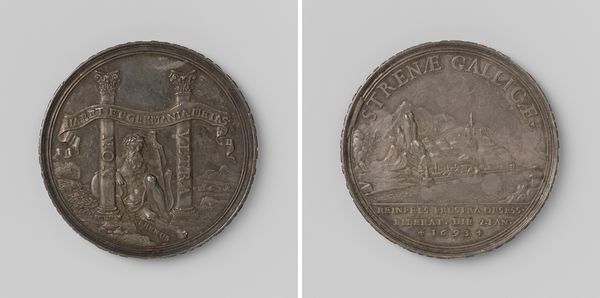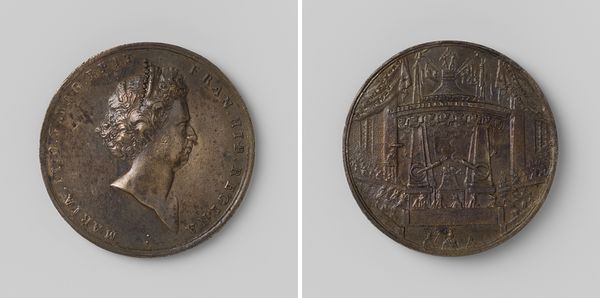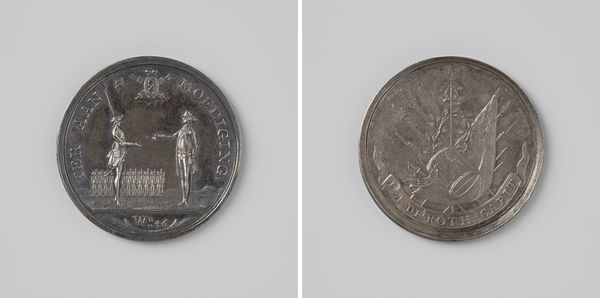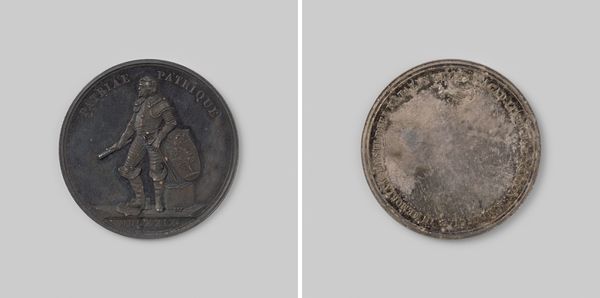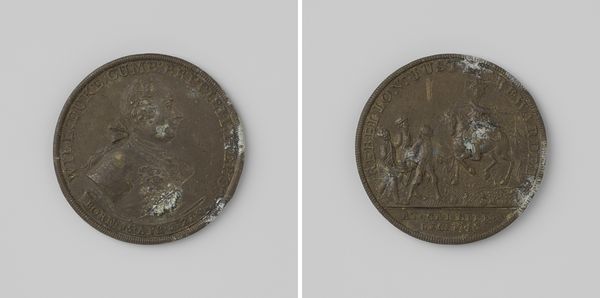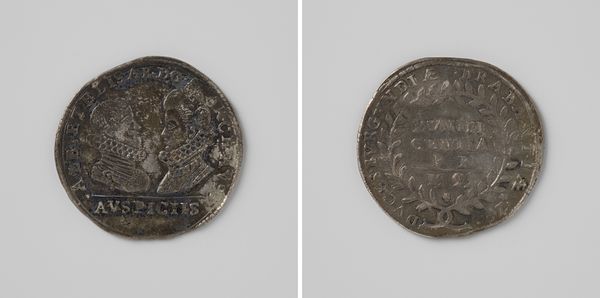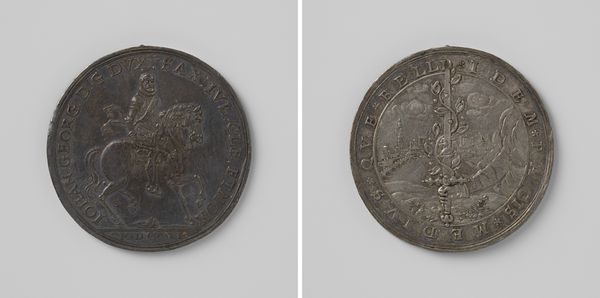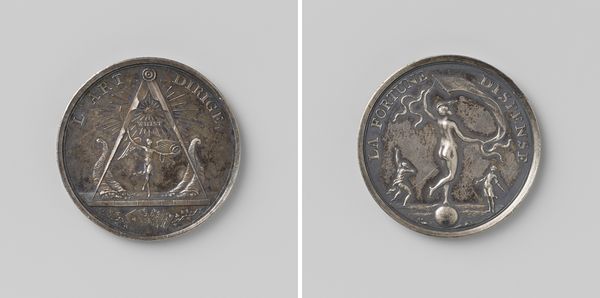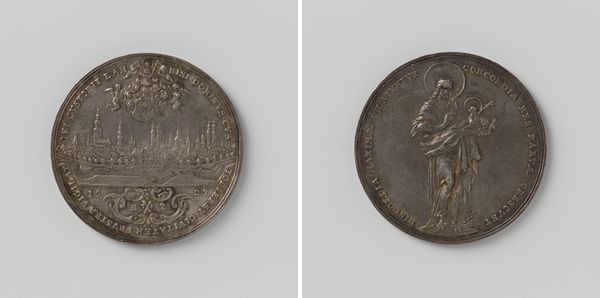
metal, relief, sculpture, engraving
#
baroque
#
metal
#
sculpture
#
relief
#
sculpture
#
history-painting
#
engraving
Dimensions: diameter 4.5 cm, weight 30.45 gr
Copyright: Rijks Museum: Open Domain
Curator: Philipp Heinrich Müller created this relief sculpture around 1693. It is titled "Rheinfels ontzet door de Landgraaf van Hessen," and crafted from metal— likely silver. What are your initial thoughts? Editor: Well, first of all, it seems like the materials and the relief process emphasize the commemoration itself. I’m struck by the craftsmanship—the way light catches on the raised surfaces. It feels weighty, historical in a tactile way. Curator: Exactly! The use of silver elevates it beyond a mere commemorative object. Focusing on the formal qualities, notice how the composition is structured around a central figure, balanced by inscriptions. Consider the verticality created by the pillars, anchoring the visual narrative. Editor: And look at the detail in those tiny inscriptions. It highlights literacy and the power of language as tools within elite circles, even if it leaves the everyday viewer out. I mean, consider what it takes to produce something like this: the mining, smelting, the engraver’s labor. It's bound to be read as a status symbol. Curator: I see your point, the physical creation undoubtedly involves many laborers whose work fades behind its polished facade, and its use of allegorical figures and Latin inscriptions limits its audience. Yet the inscription "HALET ET GERMANIA PIETAS", roughly translated to "Piety Dwells Here, Germany", underscores its purpose. The two pillars labeled 'Non' and 'Ultra' bracket a classical river God, possibly symbolizing the significance of piety in war. The opposing side showcases a scene and yet another, long Latin inscription, celebrating military victory, namely the liberation of Rheinfels castle. Editor: So, the medal creates this neat, visual statement celebrating a specific act of heroism, while glossing over the broader, potentially exploitative mechanisms. Curator: Perhaps, but there's also a strong assertion of cultural values interwoven into that political purpose—order, reason, and tradition— evident in the balanced symmetry of forms and clean lines, the classically alluding figures. Editor: Yes, but it's a perspective deeply embedded in its socio-economic reality. We're reminded who commissions, who profits, and whose stories get told and how. The artistic object, beautiful though it may be, becomes evidence of the labour behind it. Curator: Precisely. By examining it closely we understand something far more expansive about production and society in the baroque period. Editor: Yes, it all meets in that one carefully crafted metal disc. Curator: I agree. These dialogues let us see art's intrinsic form while acknowledging the real work of art history which goes into shaping it.
Comments
No comments
Be the first to comment and join the conversation on the ultimate creative platform.
